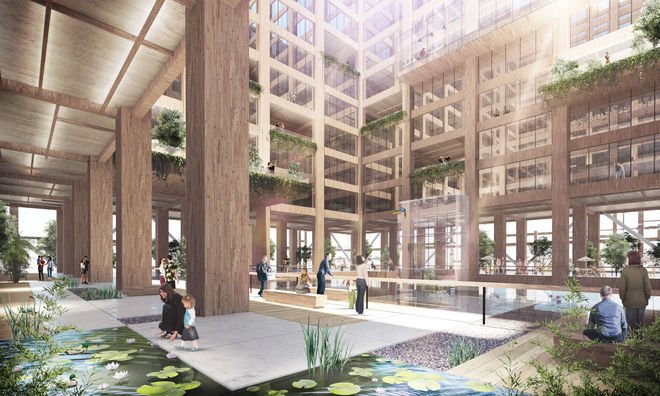Japanese Architects Are Creating The World's Tallest Wooden Skyscraper
Sumitomo Forestry is planning to erect a 70-story skyscraper made mostly of timber over the next few decades. The $5.6 billion structure will be used for apartments, offices, and shops, and it could display how beneficial moving to timber construction can be.
Updated May 13 2019, 4:59 p.m. ET
A new 70-story skyscraper is currently being planned out in Tokyo, Japan, but there’s a unique twist. The structure is going to be made mostly of wood and would be the largest of its type in the world. It’ll be a multi-use building with apartments, offices, and shops, and it will dramatically reduce carbon dioxide emissions compared to traditional structures.
Called the “W350” project, the Sumitomo Forestry Company are the architects behind the new skyscraper. It’s expected to be nearly 1,150 feet tall and will cost $5.6 billion US. 90 percent of the building will be made of wood with the other 10 percent from steel. The latter material is needed for the skyscraper to withstand high seismic activity.
All of the interior structure, which will measure at nearly 4.9 million square feet of total floor space, is going to be made entirely out of wood. The amount of wood needed to build the skyscraper is the equivalent of building 8,000 wooden houses. Timber in the skyscraper will be replaced and fixed on a scheduled basis.
This all sounds like a burden for Japanese forests, but this will actually benefit them as much of it is not maintained. Sumitomo Forestry notes in their press release that "the self-supply rate for domestically-produced timber is only at around 30 percent." The Conversation states that if worldwide wood harvest bumped from 20 percent to 34 percent annually, up to 31 percent of carbon dioxide emissions could be avoided.

Since W350 is aimed at being completed on Sumitomo Forestry’s 350th anniversary, it won’t be finished until 2041. However, the company noted in their press release that despite this building being twice as costly as traditional structures, the $5.6 billion US price tag will go down as technology advances.
Japan has enforced architects to use more environmentally friendly building materials for public buildings that are three stories or smaller since 2010. It wasn’t uncommon to find wooden houses in the country’s past, but recurring fires boosted the shift to concrete, steel, and brick.
As most of us are probably thinking, doesn’t a massive wooden skyscraper sound like a fiery death trap? Thanks to increases in fire-resistant technology, it’s just as safe as other building material. In fact, timber provides the benefit of not expanding when heated and it holds its strength. Steel can lose strength in fires, which leads to structural collapse.
Wooden structures are increasingly becoming popular worldwide. Framework, an 11-story building made of all wood that will house offices and apartments, has been approved by the city of Portland, Oregon. Other construction companies have noted that wooden structures can be built quicker than expected.
